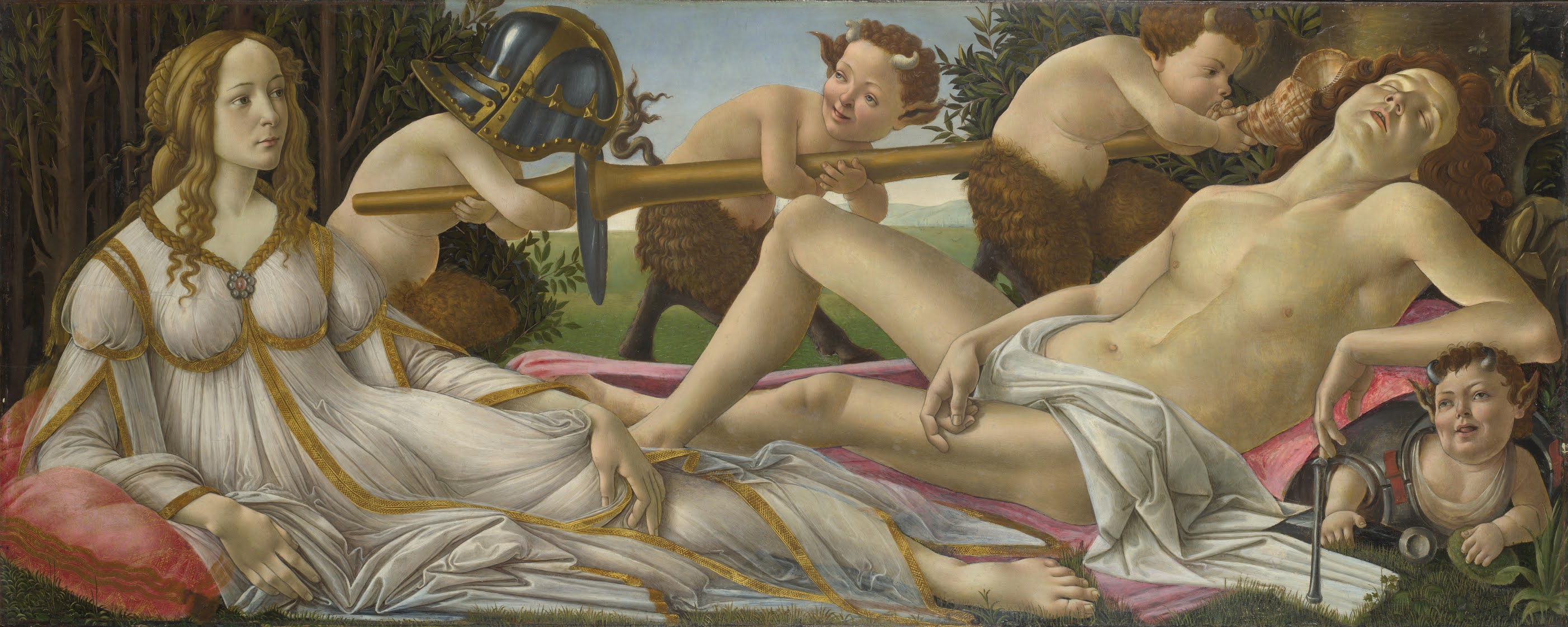Sandro Botticelli: When love conquers war during the Italian Renaissance
Sandro Botticelli's painting is inspired by a love story between Venus, the goddess of love, and Mars, the god of war. This love story between Venus and Mars is quite illicit. The reason for this is that Venus and Mars had forbidden love. Venus was married to the god of fire, Vulcan. Vulcan did find out about Venus's affair with Mars and was said to have exposed them in the act of adultery to all the other Gods from Mount Olympus. The painting does not depict the story of Vulcan's revenge, but it does show the level of love between the two. The painting also represents an illustration by the famous Greek writer and poet Lucian of Samosata. The illustration is about Alexander the Great and his wife Roxana's wedding. In the story about their wedding. The story said that cupids or angels were playing in Alexander's Armor during the wedding. Similar to what is happening to Mar's armor in the painting. The painting can tell many stories, and every individual will have their own.
This painting is highly detailed; some of them are unnoticeable at a glance. The painting Venus and Mars is amusing to analyze. It seems as if Mars is conquered by love; he is asleep in a visibly noisy and rambunctious environment but stays deep asleep. He has commotion in both ears, in one ear, there are a bunch of buzzing wasps, and the other has a childish Satyr blowing a shell horn. The other Satyr's are playing in Mar's armor and with his weapon. Venus is awake and alert. She is fully dressed in a beautiful gown, unlike Mars. An interesting detail added is her hair is part of her gown, at the neckline. She looks gorgeous, calm, and serene in the painting, unmoved by the goofy and rambunctiousness around her too.
Botticelli, Sandro. “Venus and Mars.” The National Gallery, https://www.nationalgallery.org.uk/paintings/sandro-botticelli-venus-and-mars.
“Venus and Mars.” History Today, no. 2, Feb. 2021, pp. 4–5. EBSCOhost, search.ebscohost.com/login.aspx?direct=true&db=rlh&AN=147981149&site=eds-live.



Comments
Post a Comment